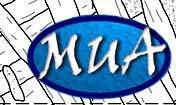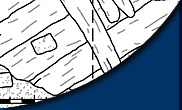
Emanuel Point II: Excavations on the North Unit
16-20 June 2008
By Team 3:
Eric Swanson, Jenn Scharler, and Scott Sorset
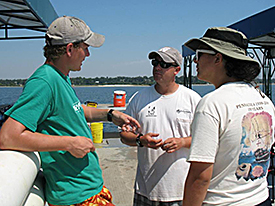
Team 3 discussing their dive plan on the UWF barge.
On Monday our team worked on the north unit at Emanuel Point II. We continued our recording of the level from the previous week at around 25 cm, and dredged into the unit to hopefully uncover the keelson or some guiding point to where the center of the ship would be laying. Our team dredged up a piece of slag, which we placed into an artifact bag to be processed in the lab for further evaluation. As the day progressed, our team reached a point where what appears to be hull timber has made its home across our unit, extending SE to NW. Fortunately, a solid and fairly well preserved length of timber has survived in our unit. As visibility continued to lessen, the dive team concluded excavations of the unit at an average of depth of 47 cm.
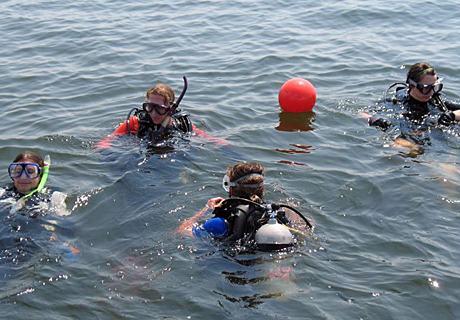
Divers descending on baseline buoy.
Tuesday, our team worked together hand fanning and dredging the hull section that we uncovered yesterday. The artifacts we dredged and hand collected today were found 47-55 cm below the unit surface. Some of the artifacts uncovered were lead sheeting, small mammal bone, hull concretions, and coarse earthenware ceramics. After the dive, the team recorded the artifacts in the logbook and made individual tags and bags for each artifact type. It is amazing to think that we are the first people to touch these artifacts in over 400 years! The unit is looking more and more synchronized with units excavated during the 2007 field school. We ended the day during a tumultuous thunderstorm, and left the unit at an average depth of 55 cm.
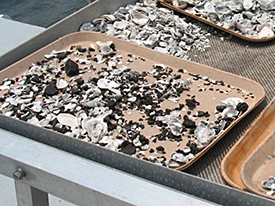
Dredge spoil sorting and artifact processing table on barge. (Large View)
During the middle of the week the team continued excavations near the bow of the Emanuel Point II shipwreck. Our task centered on an interesting design feature that we may have in our 1x1 meter excavation area. Archaeologists refer to this feature as a ‘rabbet’. This is essentially a cutout made in a large timber that allowed a very tight fit for other pieces of the ship’s hull.
Greg was the first to identify this as a possible rabbet because of its unusual triangular shape and the high number of concreted fasteners around it. The team is very excited about finding this because it will help the project better understand exactly where they are located on this shipwreck. More work needs to be done to determine if this feature is, in fact, a rabbet.
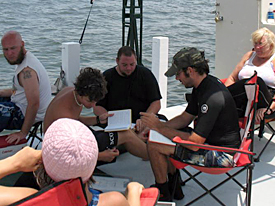
Topside on the barge.
Diving conditions while shallow are often difficult because it is hard to see. Many of the artifacts and ship design features encountered are not seen first, but rather felt by hand. This makes identification difficult at times. The field school crew and supervisors were trained to excavate slowly and carefully. Paperwork is very important in archaeology. We document everything daily in day logs, dive logs, photo logs, level forms, artifact forms, and field books.
This project continuously produces new and exciting information on a almost forgotten period in history. We all cannot wait to see what we will uncover next!
This week also introduced the field school students to various aspects of public archaeology. By the end of the summer students will have received plenty of experience talking to the media, local public and distinguished guests. We will continue excavations on EPII next week, and hopefully the weather will be on our side and we can open up more units and begin to answer more of our research questions.
Please feel free to contact us if you have any questions or concerns at: mua@keimaps.com.
Return to Project Journal home page.
